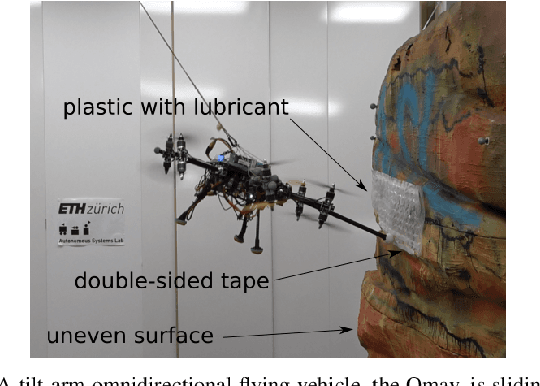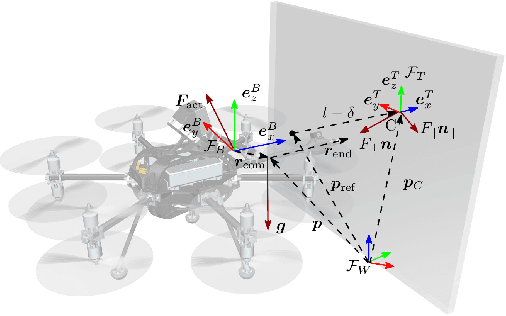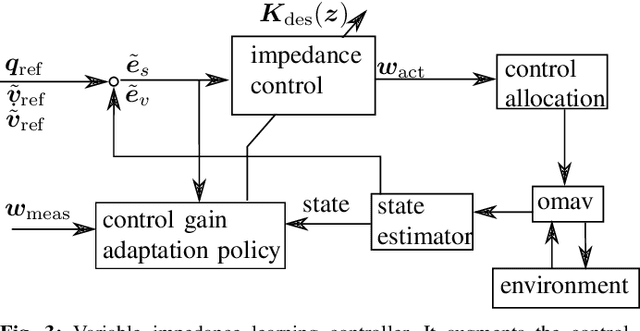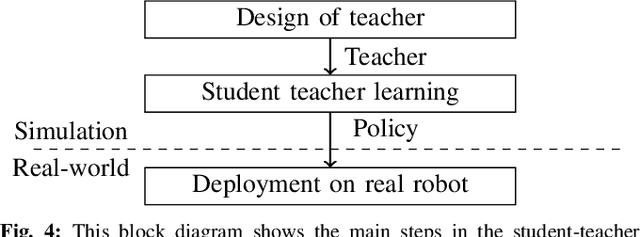Learning Variable Impedance Control for Aerial Sliding on Uneven Heterogeneous Surfaces by Proprioceptive and Tactile Sensing
Paper and Code
Jul 05, 2022



The recent development of novel aerial vehicles capable of physically interacting with the environment leads to new applications such as contact-based inspection. These tasks require the robotic system to exchange forces with partially-known environments, which may contain uncertainties including unknown spatially-varying friction properties and discontinuous variations of the surface geometry. Finding a control strategy that is robust against these environmental uncertainties remains an open challenge. This paper presents a learning-based adaptive control strategy for aerial sliding tasks. In particular, the gains of a standard impedance controller are adjusted in real-time by a policy based on the current control signals, proprioceptive measurements, and tactile sensing. This policy is trained in simulation with simplified actuator dynamics in a student-teacher learning setup. The real-world performance of the proposed approach is verified using a tilt-arm omnidirectional flying vehicle. The proposed controller structure combines data-driven and model-based control methods, enabling our approach to successfully transfer directly and without adaptation from simulation to the real platform. Compared to fine-tuned state of the art interaction control methods we achieve reduced tracking error and improved disturbance rejection.
 Add to Chrome
Add to Chrome Add to Firefox
Add to Firefox Add to Edge
Add to Edge